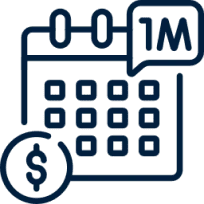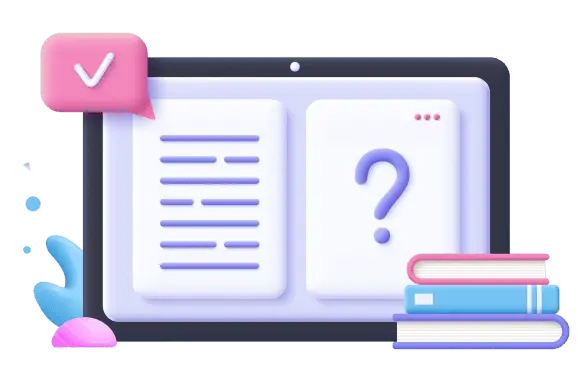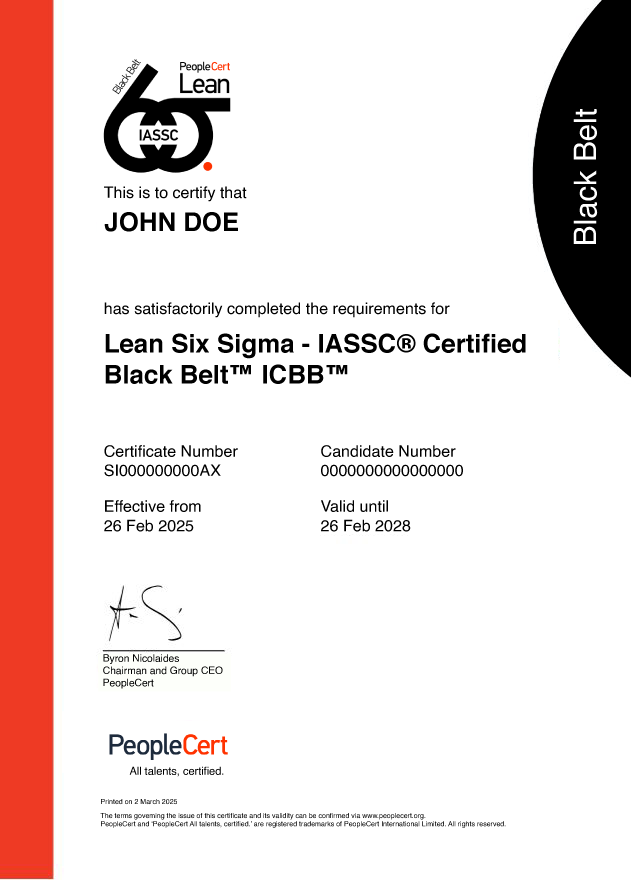

Six Sigma Black Belt Certification
Lean Six Sigma Black Belt Training in USA
The Most Comprehensive Certification Course for Guaranteed Career Success
1.5K+ Enrolled
Six Sigma Black Belt Certification

5.0
1.5K+ Enrolled
The Most Comprehensive Certification Course for Guaranteed Career Success



Guaranteed to Run Workshops

Expert-Led Study Sessions

Networking Opportunities

Flexible Monthly Payment Plans

Real-World Case Studies

Hands-On Project Experience
Request More Details
450K+
Professionals trained
250+
Workshops every month
30+
Trainers
450K+
Professionals trained
250+
Workshops every month
20+
Trainers
Course Overview
The Lean Six Sigma Black Belt certification is designed for the professionals seeking to enhance their expertise in process improvement, quality management, and leadership. This course is mainly focused on in-depth knowledge of Lean and Six Sigma methodologies, equipping participants with the skills to lead complex projects, eliminate inefficiencies, and drive business excellence.
Through interactive training, participants will master data-driven decision-making, statistical analysis, and problem-solving techniques using tools like DMAIC (Define, Measure, Analyze, Improve, Control). These certified professionals will learn how to implement, perform, interpret and apply Lean Six Sigma at an advanced level of proficiency.
At Simpliaxis, this globally recognized course covers real-world case studies, hands-on exercises, and expert-led instruction to ensure practical application. This course is ideal for professionals in manufacturing, healthcare, IT, and other industries aiming for leadership roles in quality management. Enroll today to enhance your career prospects and become a certified Lean Six Sigma Black Belt.

Six Sigma BB Training Highlights
36 Hours of live interactive sessions.
Get trained by six sigma experts.
Earn up to 36 PDUs.
24/7 Simpliaxis Support & Assistance
Learn through practical case studies
End-to-end support and assistance for passing the certification

Career upliftment


Unsure about your prep?

Benefits focused on Individuals and corporate
Common attendees
Quality Managers
Process Improvement Specialists
Project Managers
Business Analysts
IT & Software Professionals
Business Owners
Entrepreneurs
Operations Managers
Business Analysts

Prerequisites for Six Sigma BB certification training
There are no prerequisites for attending the course. However, it is recommended that having basic understanding of six sigma fundamentals and concepts is beneficial.
Get the Six Sigma BB Certification

Curriculum
1.1 The Basics of Six Sigma
1.2 The Fundamentals of Six Sigma
1.3 Selecting Lean Six Sigma Projects
Building a Business Case & Project Charter
Developing Project Metrics
Financial Evaluation & Benefits Capture
1.4 The Lean Enterprise
2.1 Process Definition
2.2 Six Sigma Statistics
2.3 Measurement System Analysis
2.4 Process Capability
3.1 Patterns of Variation
3.2 Inferential Statistics
3.3 Hypothesis Testing
3.4 Hypothesis Testing with Normal Data
3.5 Hypothesis Testing with Non-Normal Data
4.1 Simple Linear Regression
4.2 Multiple Regression Analysis
4.3 Designed Experiments
4.4 Full Factorial Experiments
4.5 Fractional Factorial Experiments
5.1 Lean Controls
5.2 Statistical Process Control (SPC)
5.3 Six Sigma Control Plans
Course Curriculum
1.1 The Basics of Six Sigma
1.2 The Fundamentals of Six Sigma
1.3 Selecting Lean Six Sigma Projects
Building a Business Case & Project Charter
Developing Project Metrics
Financial Evaluation & Benefits Capture
1.4 The Lean Enterprise
2.1 Process Definition
2.2 Six Sigma Statistics
2.3 Measurement System Analysis
2.4 Process Capability
3.1 Patterns of Variation
3.2 Inferential Statistics
3.3 Hypothesis Testing
3.4 Hypothesis Testing with Normal Data
3.5 Hypothesis Testing with Non-Normal Data
4.1 Simple Linear Regression
4.2 Multiple Regression Analysis
4.3 Designed Experiments
4.4 Full Factorial Experiments
4.5 Fractional Factorial Experiments
5.1 Lean Controls
5.2 Statistical Process Control (SPC)
5.3 Six Sigma Control Plans
What you will learn in this Six Sigma BB workshop
Advanced Understanding of Six Sigma Methodology
Learn advanced techniques such as hypothesis testing, regression analysis, and design of experiments (DOE) to understand and evaluate complex data sets.
Leadership and Project Management
Learn how to guide teams from different areas in Six Sigma projects by using methods such as DMAIC (Define, Measure, Analyze, Improve, Control) and DMADV (Define, Measure, Analyze, Design, Verify).
Process Mapping and Improvement
Learn how to evaluate processes with tools such as SIPOC (Suppliers, Inputs, Process, Outputs, Customers) and Value Stream Mapping (VSM) to spot areas of waste.
Cost Reduction and Efficiency Improvement
Understand how to determine the cost savings and return on investment (ROI) for Six Sigma projects, offering clear data for stakeholders.
Quality Control and Measurement Systems
Understand how to apply control charts and compute process capability indices (Cp, Cpk) to effectively monitor and manage processes. Explore measurement systems analysis (MSA) to guarantee the reliability and accuracy of data in quality evaluations.
Sustainability and Continuous Improvement
Discover how to develop control plans and set up standard work procedures that guarantee lasting improvements.

40+ Certification programs made an impact
Employee retention improved by 45%
Work satisfaction and capabilities improved by 30% on an average
100+
Clients













Six Sigma BB Certification Course For Corporates
With learning targeted to your unique team environment, we at SimpliAxis help to resolve your specific issues and meet your specific needs with tailored training methods. We offer corporate training globally to keep Organizations up to date by building the knowledge gap required and make them strive in the competitive world with the right skills according to the industry needs.

Our Customer words for us
Meet the Team That's Invested in Your Success
What is Six Sigma Black Belt certification?
Are there any prerequisites for taking Six Sigma Black Belt Certification?
What are the key topics covered in Six Sigma Black Belt Certification?
What are the benefits of Six Sigma Black Belt Certification?
Who usually attended Six Sigma Black Belt Certification Training?
What is the difference between Six Sigma Black Belt Certification and Master Six Sigma Black Belt Certification?
Is Six Sigma Black Belt an advanced level certification?
Why choose Six Sigma Black Belt Certification?
Is there any exam to get the Six SIgma Black Belt Certification?
Is the exam fee included in the training fee?
What happens to my token or partial payment if I don’t enroll immediately?
Is there a preferred currency for payment, especially for international students?
Can payments be made online through your website, or do I need to visit a physical location?
Do you offer any discounts or promotions for early payment?
Can I pay for the course in installments, or is full payment required upfront?
Will I get a refund if I cancel my enrollment?
Where will I get my payment receipt?
Is there any transaction or processing fee?
What cards do you accept?
What payment options are available?
What if I miss a class? Are there any money back options?
If I want to know more about Training, whom should I connect with?
Is there any option to complete the Training in the native language if a participant chooses to?
Can I receive personalized Training at my convenience?
Where do I find the upcoming schedules of my course?
After enrollment, can I change the date of my training class?
Do I get any certificate upon completion of the course?
How do I enroll in the training course?
What are the different courses offered by Simpliaxis?
What are the different modes of Training available for Simpliaxis courses?
Do you offer online Training?
Do you offer corporate Training?
Who are the instructors of my course?
Is there any discount available for the Simpliaxis courses?
Whom do I contact if I have more queries regarding my course?
Are your courses affordable?
Why should I choose Simpliaxis?
What is the object of Simpliaxis?
How much discount will I get if I enroll for the Training?
Six Sigma BB Course FAQs
The key topics covered in Six Sigma Black Belt Certification includes:
The common benefits of Six Sigma Black Belt Certification:
The common attendees of six sigma black belt certification training:
You can reach out to our experienced career counselor
or email us on support@simpliaxis.com
or contact any of our phone numbers
or you can chat with us anytime
or visit our contact us page https://www.simpliaxis.com/contact-us
Find out why 1,000+ professionals love SimpliAxis